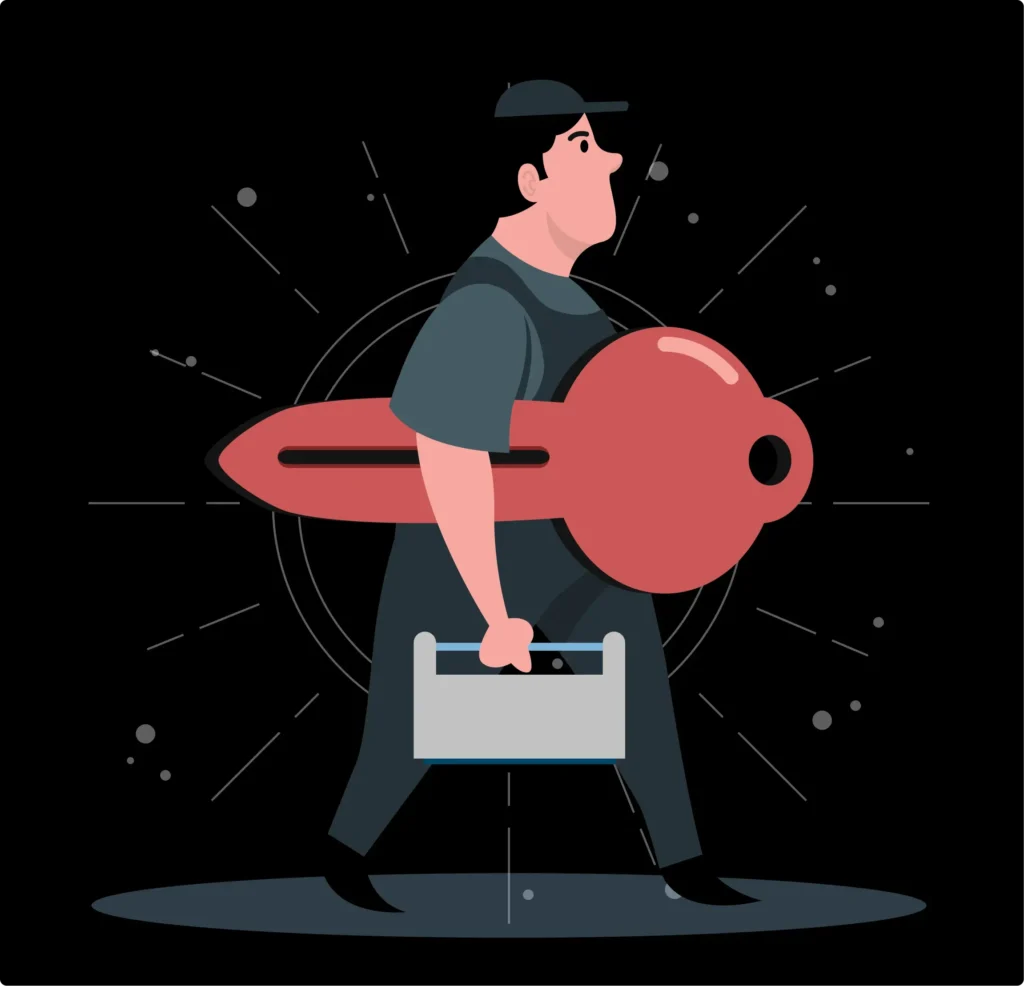
- Leonardo da Vinci conceptualized the first sprinkler system in the 15th century.
- Ambrose Godfrey’s explosive design marked the first automatic fire suppression attempt.
- Manual systems by Carey and Congreve laid the early groundwork for modern sprinklers.
- Parmelee’s automatic sprinkler head revolutionized fire safety.
- Grinnell’s glass bulb sprinkler system still shapes modern standards today.
It is very fascinating that Leonardo da Vinci started the history of sprinklers. But long before building codes and automatic fire sprinkler systems existed to protect a commercial building, there were cities made of wood that turned into ashes. Millions of lives and entire neighbourhoods used to be engulfed in flames from a small fire, just because humans weren’t able to find a solution to fight the fire automatically.
But there was a solution that existed centuries before the 1666 Great Fire of London happened, and it came from the brush of the great artist Leonardo Da Vinci. Interesting, right? Since then, Ambrose Godfrey’s gunpowder, Sir William Congreve’s manually activated system, and Parmelee’s first automatic sprinkler system, every single innovation has contributed to the ability to fight the unpredictable fire effectively.
In this article, we are going to dive deep into the untold history of fire sprinklers. We will talk about every key figure and idea that led us to the modern sprinkler heads that are now embedded in every building, and why it is a story of invention born from desperation.
Table of Contents
Before Fire Sprinkler Systems
In the medieval period, especially in London, there were narrow lanes and timber-framed houses that were the greatest fire hazards. If there was a small spark in these environments, it led to a large-scale fire, and the only defense that societies had was lines of people who manually passed buckets of water from wells or rivers to douse the flames. There were no hydrants, no water hoses, and obviously no fire suppression systems. The people used to depend on tools like fire hooks to tear down burning buildings and even dynamite to create firebreaks that caused more damage than fire itself. Throughout history, there have been some devastating fire incidents, such as the Great Fire of London in 1666, the Boston Fire, and other fires in Edinburgh and Constantinople that changed the course of entire cities.
Humans started to find a way to stop a fire before it grew out of control, and finally, there were watchmen who served as the first fire alarms. They would patrol at night and would ring bells or shout about smoke or a flicker of flames while walking through the streets. Even though it was better than nothing, it still depended on visibility and response time. With time, civilizations were growing, and rapid industrialization was taking place. The factories were packed with workers, and the wooden constructions increased the fire risk. Industrialization was followed by devastating fires and mounting property damage, which forced people to think about fire protection and safety.
The Vision Of Leonardo Da Vinci
Leonardo Da Vinci was the first person to conceptualize what we now recognize as a fire sprinkler system. It is both surprising and astonishing to know because whenever we speak of Leonardo da Vinci, our minds are often flooded with pictures of The Last Supper, the Vitruvian Man, or Mona Lisa. But this story of the sprinkler started in the late 15th century. Leonardo da Vinci was working for Ludovico Sforza, who was the Duke of Milan, and he was given the responsibility to design a kitchen system for a grand banquet that would be hosted by the Duke. And as a part of his concept, he drew a water-based fire suppression system, which is the precursor to the modern fire sprinkler. His design showed a network of water-filled pipes that would flood the entire space to extinguish the flames, should there be any fire emergency. The schematic drawing of his first fire sprinkler system concept exists in Codex Atlanticus among other thousands of sketches and technical drawings.
However, it is said that the complex kitchen system drawn by Leonardo was never successfully executed. In fact, it was a complete disaster. The automated machinery malfunctioned, the conveyor belts jammed, and fires broke out due to overheating. The water sprinkler system designed by him worked perfectly fine, and the whole area was flooded with water, which made both the non-burnt and burnt food damp, leaving the guests hungry.
So, long before industrialization or before electricity or even before modern plumbing, da Vinci imagined a vision that took nearly two more centuries for the world to catch up with.
The 1723 Automatic Fire Suppression System By Ambrose Godfrey
Surprisingly, Ambrose Godfrey, a German-born English chemist and inventor, used gunpowder to stop fires. He had a chemical business in London that especially dealt with phosphorus, and thus his business was surrounded by flammable materials. That’s why he tried to find a proactive solution to extinguish a fire automatically in the event of a fire. In 1723, he was granted a patent for an “Apparatus for Extinguishing Fires”, which actually became one of the earliest recorded examples of an automatic fire suppression system. His design had a fire-detecting fuse that was installed in the room, and it would be triggered by heat or flame. After that, the fuse would ignite a small charge of gunpowder, and the explosion would break a container filled with a fire extinguishing liquid, which would be dispersed across the fire-affected area. This fire extinguisher liquid is believed to be a form of early chemical suppressant.
This system was actually installed and tested in a London warehouse, and it is said that it successfully extinguished the test fires. However, Godfrey’s invention didn’t go into widespread use because of the use of explosives to combat fires, as there was a risk of accidental ignition, and the installation was quite unsuitable for small businesses.
John Carey’s Perforated Pipe System
In 1806, John Carey was granted a British patent for a sprinkler system that used a network of perforated pipes, which were connected to a water source to douse flames. His design included ceiling-mounted pipes that would run through buildings, and these pipes would have perforations (small holes) through which water could fall. A gravity tank would be placed above the system, which would be the source of the water supply. But someone has to open a valve in the event of a fire. So it wasn’t automatic, but his concept became a blueprint for a fixed, indoor wet pipe sprinkler system that was later refined by Sir William Congreve.
Sir William Congreve and Theatre Royal
Sir William Congreve adapted the design of Carey and refined it. He installed the first working sprinkler system at Theatre Royal, Drury Lane in London, which was one of the most iconic theatres of its time. He used perforated metal pipes and connected them to a large water tank. The water flowed through the pipes when a manual valve was opened. His sprinkler system worked, and this was revolutionary. It marked the first use of a sprinkler system in a public entertainment venue and made it a landmark in fire safety history.
He installed a similar system in textile mills, and even though it was not automatic, the system served as a predecessor to modern sprinkler systems.
The First Successful Automated Sprinkler System By Henry S. Parmelee
Henry S. Parmelee was a piano manufacturer in New Haven, Connecticut, and the president of the Mathusek Piano Manufacturing Company. He wanted to protect his inventory of expensive grand pianos from fire. That’s why in 1874, he designed the first automatic sprinkler head. Each sprinkler head had a solder-sealed valve, and when heat from a fire reached an ambient temperature, the solder would melt, which would in turn release the valve and allow the water to spray directly on the flames. This way, only the sprinkler heads that are directly above the fire would activate. Parmelee installed his system in his own piano factory, and it worked.
He patented his invention, and it was actually based on an earlier prototype designed by Philip W. Pratt. However, he improved it into a more reliable and commercial product.
Frederick Grinnell And The Glass Bulb
Frederick Grinnell, the owner of the Providence Steam and Gas Pipe Company (later known as Grinnell Fire Protection), was manufacturing the Parmelee Sprinkler, but he got frustrated with its limitations and redesigned it. The updated design had a more reliable fusible element, better distribution of water, improved sensitivity to heat, and fewer false alarm activations and maintenance issues.
But the most iconic contribution by Grinnell came later when he invented the heat-sensitive glass bulb sprinkler head, which is still commonly installed in many buildings. In his design, a small glass bulb is filled with a liquid, and the bulb seals the water outlet. When the fire breaks out, the liquid expands and the bulb breaks, which in turn will release water. These bulbs were color-coded and could be calibrated for different activation temperatures.
These glass disc sprinklers didn’t have the issues that were found in earlier fusible link devices, and thus, they became the foundation of fire safety standards used even today. Grinnell was also a part of the committee that published the first uniform standard for the installation of sprinkler systems (NFPA 13), which ultimately led to the formation of the National Fire Protection Association (NFPA).
The Modern Sprinkler Systems and Fire Protection Industry
Today, sprinkler systems can be literally customized for every type of occupancy, from high-rise buildings to underground facilities. They can also vary for different weather conditions and required water pressure, such as dry pipe sprinkler systems for colder regions, and smaller pipes for tight architectural spaces. Modern systems commonly use spray nozzles with two-part metal link mechanisms that respond rapidly to specific temperature thresholds and activate only when truly needed. Some sprinkler heads have more refined spray patterns and smaller droplet sizes to reduce water damage in environments like data centers.
Modern buildings have become more complex, and sprinkler systems need to communicate and coordinate with other fire alarm components, especially the fire alarm panel, to fight against fire. One of the major developments in this century is Early Suppression Fast Response (ESFR) sprinklers that have the ability to suppress high-challenge fires that are common in warehouses and underground buildings. Global alliances like the European Fire Sprinkler Network (EFSN) and the National Fire Sprinkler Network (NFSN) are also playing a critical role in standardizing sprinkler protection. The benefits of sprinkler systems have extended to the economic world, where they not only reduce insurance costs but also protect assets, especially in public buildings that are highly occupied and have greater fire risks.
Conclusion
Fire no longer has the same uncontrollable power as it once did, as we have grown to learn how to respond to it in a quicker and effective manner. And the fire sprinkler systems that are installed in our homes, institutions, and cities are a result of centuries of trial and error. From da Vinci’s failed banquet to Godfrey’s explosive idea to the practical implementation of Congreve and the globally adopted glass bulb developed by Grinnell, every innovation has laid the foundation for the fire safety that we have today.

Get Insights Delivered Straight
To Your Inbox!
Related Reading
Why Your Field Software Management Software Needs QuickBooks Integration
ZenTrades Why Your Field Service Management Software Needs QuickBooks Integration Read More Request Demo...
Read MoreZenTrades How To Manage Electrical Service Agreements Like...
Read MoreZenTrades The Best 5 Jobber Alternatives In 2023...
Read More

